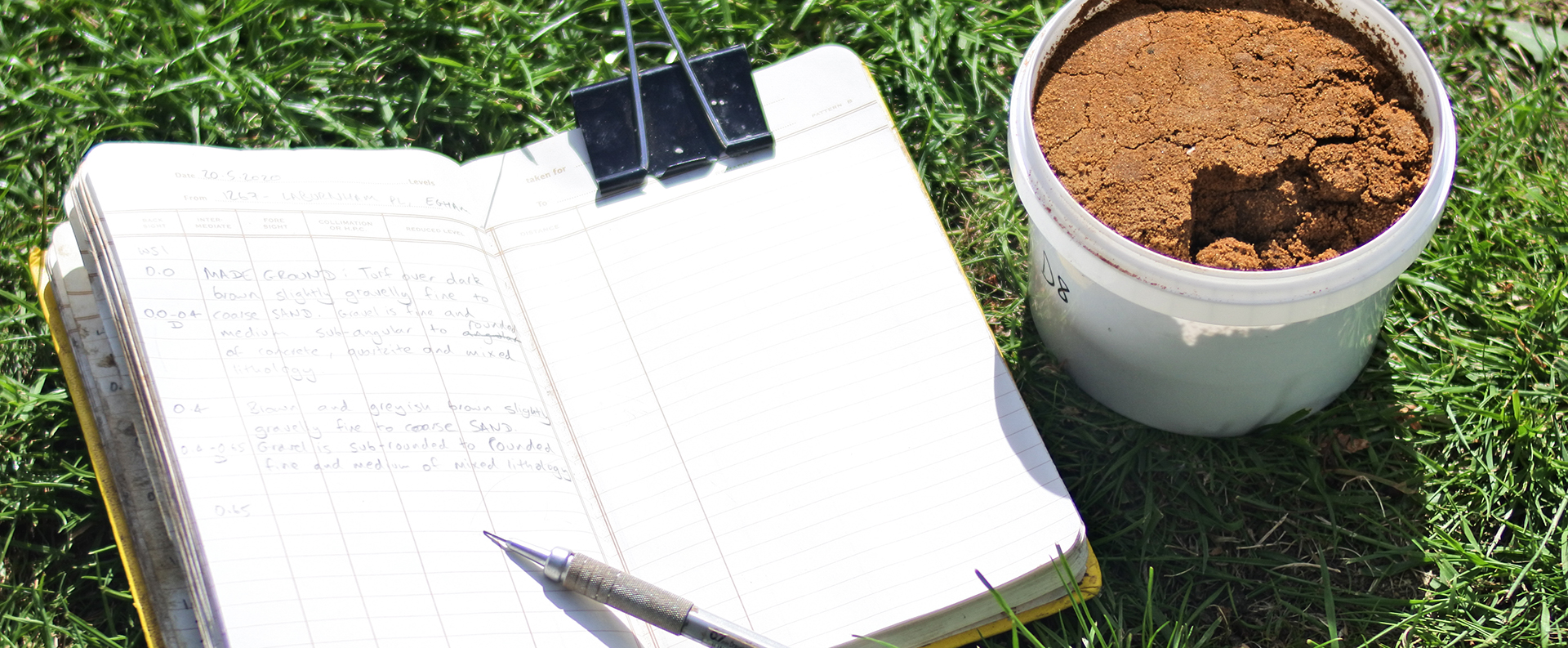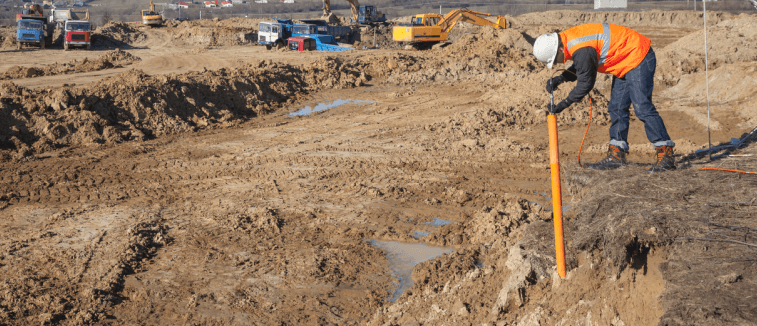Discovering the Role of a Geotechnical Engineer Description and Duties
Discovering the Role of a Geotechnical Engineer Description and Duties
Blog Article
The Importance of Geotechnical Design in Dealing With Environmental Difficulties and Enhancing Building And Construction Security
Geotechnical design functions as a foundation in the junction of ecological stewardship and construction security, supplying critical insights right into the habits of soil and rock under various problems. This technique not only addresses pressing environmental challenges such as soil disintegration and groundwater protection however likewise enhances the effectiveness of infrastructure versus all-natural threats. By carrying out strategic site examinations and tailored mitigation procedures, geotechnical engineers play an essential function in safeguarding both human lives and ecological integrity. Yet, the complexities of these challenges raise crucial inquiries about the future instructions of this field and its implications for lasting development.

Role of Geotechnical Engineering
Geotechnical design plays a critical duty in the style and building of framework by resolving the habits of dirt and rock materials under numerous conditions. This area of engineering is important for understanding the communication in between frameworks and the ground, which consists of establishing the load-bearing ability of soil, examining security, and anticipating potential negotiation or failure.
Geotechnical engineers are responsible for performing website examinations, which involve tasting and testing soil and rock to collect data on their physical and chemical homes. This information is essential for developing structures, preserving wall surfaces, and various other earth-retaining frameworks that ensure safety and durability. Additionally, geotechnical engineering informs the choice of proper building methods and materials, thereby minimizing threats related to soil actions.
Additionally, the assimilation of geotechnical engineering concepts into urban preparation and ecological monitoring is essential for resolving obstacles such as ground contamination and groundwater administration. By recognizing geotechnical factors, engineers can develop lasting options that enhance the resilience of framework versus natural hazards, while likewise promoting ecological stewardship. Inevitably, the role of geotechnical design is crucial for attaining safe, sturdy, and ecologically mindful building and construction methods.
Dirt Erosion Reduction
Soil disintegration poses a considerable danger to both ecological security and framework honesty, impacting roughly 24 billion bunches of abundant dirt lost yearly worldwide. This phenomenon is worsened by factors such as deforestation, urbanization, and poor agricultural practices. Geotechnical design plays a crucial duty in developing reliable dirt erosion mitigation techniques that secure both the environment and building tasks.
One method involves the execution of disintegration control techniques such as vegetation planting, which supports dirt with origin systems. In addition, the building and construction of preserving walls and balconies can successfully reduce surface overflow and protect at risk locations from erosion. Appropriate drainage style is additionally critical; it decreases water build-up and routes excess drainage away from critical frameworks.
Furthermore, geotechnical designers utilize soil stablizing strategies, such as the application of geotextiles and naturally degradable mats, to improve dirt cohesion and protect against deterioration - geotechnical specialist. Normal monitoring and evaluation of erosion-prone websites make it possible for timely treatments, ensuring long-lasting sustainability. By incorporating these methods, geotechnical design not only mitigates the impacts of soil erosion yet additionally adds to the strength of framework versus environmental difficulties, inevitably cultivating a more secure and extra lasting constructed environment
Groundwater Security Strategies
Groundwater functions as a vital resource for alcohol consumption water, agriculture, and commercial procedures, making its security important for ecological sustainability and public health and wellness. Efficient groundwater security approaches are important in alleviating contamination dangers and ensuring the longevity of this resource.

Routine monitoring of groundwater top quality is likewise crucial, enabling early detection of contamination sources and promoting timely removal efforts. Employing sophisticated innovations, such as geophysical studies and remote sensing, help in identifying possible threats to groundwater books.
In addition, public education and learning and stakeholder involvement are essential, promoting community assistance for groundwater defense campaigns. geotechnical engineer description. By combining regulative measures, technological developments, and community participation, we can create a detailed structure that safeguards groundwater sources while promoting lasting development and building and construction methods
Landslide Danger Management
Landslides position substantial risks to both human security and framework, making effective threat management methods vital. Geotechnical engineering plays a vital function in identifying, analyzing, and mitigating landslide risks. A Get More Information thorough understanding of slope security, dirt technicians, and hydrology is vital for establishing effective risk administration plans.
The very first step in landslide danger management involves complete website investigations, which include geological mapping and dirt testing. These investigations aid engineers evaluate the possibility for landslides by recognizing vital variables such as slope angles, dirt composition, and water content. Utilizing advanced innovations such as remote sensing and geophysical studies can enhance the accuracy of these assessments.
Once threats are recognized, ideal mitigation measures can be implemented. These might consist of design options such as maintaining walls, water drainage systems, and slope stablizing methods. Keeping an eye on systems ought to be established to find signs of ground movement and modifications in water degrees, enabling for aggressive treatments.

Enhancing Construction Security
Construction websites usually present a myriad of risks that can jeopardize employee security and project stability. Geotechnical engineering plays a critical duty in improving building and construction safety by offering important insights right into subsurface problems. With detailed soil and rock evaluation, geotechnical designers can recognize potential dangers, such as soil instability, groundwater issues, and seismic susceptabilities, which might compromise the security of building and construction tasks.
Applying geotechnical solutions, such as proper foundation layout and the usage of preserving frameworks, alleviates these threats substantially. These services not just make certain the security of the frameworks being developed but also develop a safer working setting for building and construction employees.
Additionally, fostering a society of security through training and adherence to established security protocols even more boosts building check my reference and construction website security. By integrating geotechnical knowledge right into the preparation and implementation stages, building jobs can attain higher safety and security requirements, inevitably safeguarding workers and making sure successful job conclusion.
Conclusion
In verdict, geotechnical design offers as a vital discipline in tackling ecological difficulties and advertising construction security. With efficient soil disintegration reduction, groundwater security methods, and landslide danger monitoring, geotechnical designers add to the growth of durable infrastructure.
Geotechnical engineering offers as a cornerstone in the junction of ecological stewardship and building and construction security, supplying vital insights into the habits of soil and rock under numerous conditions. Geotechnical engineering educates the option of proper construction methods and products, therefore reducing threats associated with soil habits.
Geotechnical design plays a crucial function in creating reliable soil erosion mitigation strategies that guard both the setting and building and construction tasks.
Moreover, geotechnical designers employ dirt stabilization methods, such as the application of geotextiles and eco-friendly mats, to boost dirt communication and avoid deterioration. Through extensive dirt and rock evaluation, geotechnical designers can recognize review possible dangers, such as dirt instability, groundwater problems, and seismic susceptabilities, which may endanger the safety of building and construction tasks.
Report this page